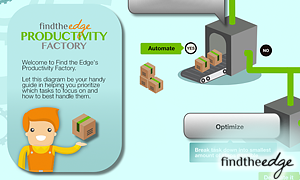 The media has been dominated by horror stories of supply chain failure over the past several weeks. Boeing’s Dreamliner lithium battery fiasco caused worldwide groundings of aircraft whilst the company threw all resources at solving the problem, getting planes flying again, and rebuilding trust in the brand.
The media has been dominated by horror stories of supply chain failure over the past several weeks. Boeing’s Dreamliner lithium battery fiasco caused worldwide groundings of aircraft whilst the company threw all resources at solving the problem, getting planes flying again, and rebuilding trust in the brand.
Right now, in the U.K. at least, our newspaper front pages and TV news top stories are all about unlabeled horse meat finding its way into beef products. Both are dramatic examples of a failure to control supply chain quality, and of inadequate supplier management.
Despite an increasing number of organisations embracing supplier relationship management (SRM) in recent years, most implement programs with insufficient skills and capabilities at their disposal, and a lack of understanding of the capacity or bandwidth required to assure sustained success.
In my work training or consulting with clients, and lecturing to MBA students in procurement and supplier relationship management, a number of general principles (axioms, if you like) have emerged that procurement leaders find useful when it comes to understanding, promoting and implementing SRM in their organisations. They represent a reality-check on what may be possible in the specific business, supply market, and key relationships the practitioner is required to manage.
So, if you’re one of those leaders and your organisation has an SRM program in place, or is thinking of launching one, then this might be a good place for you to refresh or even begin to develop your thinking.
Here are some of those principles, starting with a simple definition:
- SRM is the systematic creation and capture of post-contract value from key business relationships;
- It requires recognition that ‘relationships’ are not an end in themselves. Successful relationships are an outcome and, for the buyer, that outcome can be measured in value terms, hence the recent vogue of talking about ‘supplier value management’;
- It is mostly about collaboration with strategic suppliers, but can still be adversarial. The business must be able to flex its application of SRM appropriate to the criticality of the specific supplier relationship;
- SRM needs to be completely integrated with strategic sourcing / category management processes. It‘s not something you design after the contract is signed;
- It requires a detailed analysis of the specific supplier relationship, before the strategy can be determined; one size certainly does not fit all;
- It is about aligning the whole enterprise around the task of managing a specific supplier based on a clearly documented relationship strategy;
- SRM is not a soft option in engaging with suppliers. It’s demanding and process-focused. It’s a lot more about how the organisation systematically plans, than it is about an ’interpersonal’ skill set of the procurement person or relationship manager;
- SRM does not necessarily mean ‘win-win’; although contracts must be structured to ensure each party enthusiastically implements the agreement;
- It is as much about driving-up day-to-day operational performance as innovation and joint value creation. Many leaders get excited about senior executive contact and alliance potential. The most successful organisations recognize that the basics are the foundation of everything that can be achieved in the relationship and so focus on the essentials;
- To get started in an SRM program, it always best to successfully implement a small number of SRM pilot projects, rather than go for the ‘big bang’. If you choose the latter you’ll quickly find your resources spread too thinly, and leaders and stakeholders will become frustrated by your lack of business impact.
Organisations that deploy SRM successfully report additional value benefits of 2% of total spend, right through to 40+% from specific key relationships. Organisations continue to look to design and implement SRM but often make the mistake of assuming good governance (through supplier meetings) is enough to assure success. As you can see from what’s above, it‘s a lot more than that.
Nevertheless, that potential success is worth shooting for. As can be seen from those recent high-profile examples, leaving supplier and supply chain performance to chance is no longer an option.





